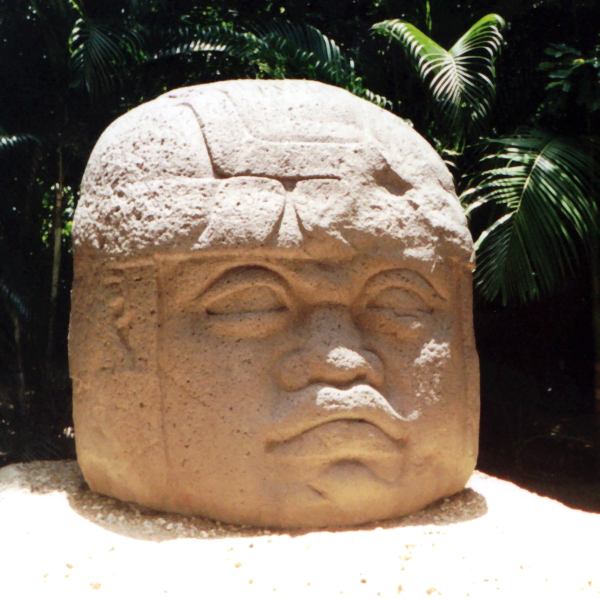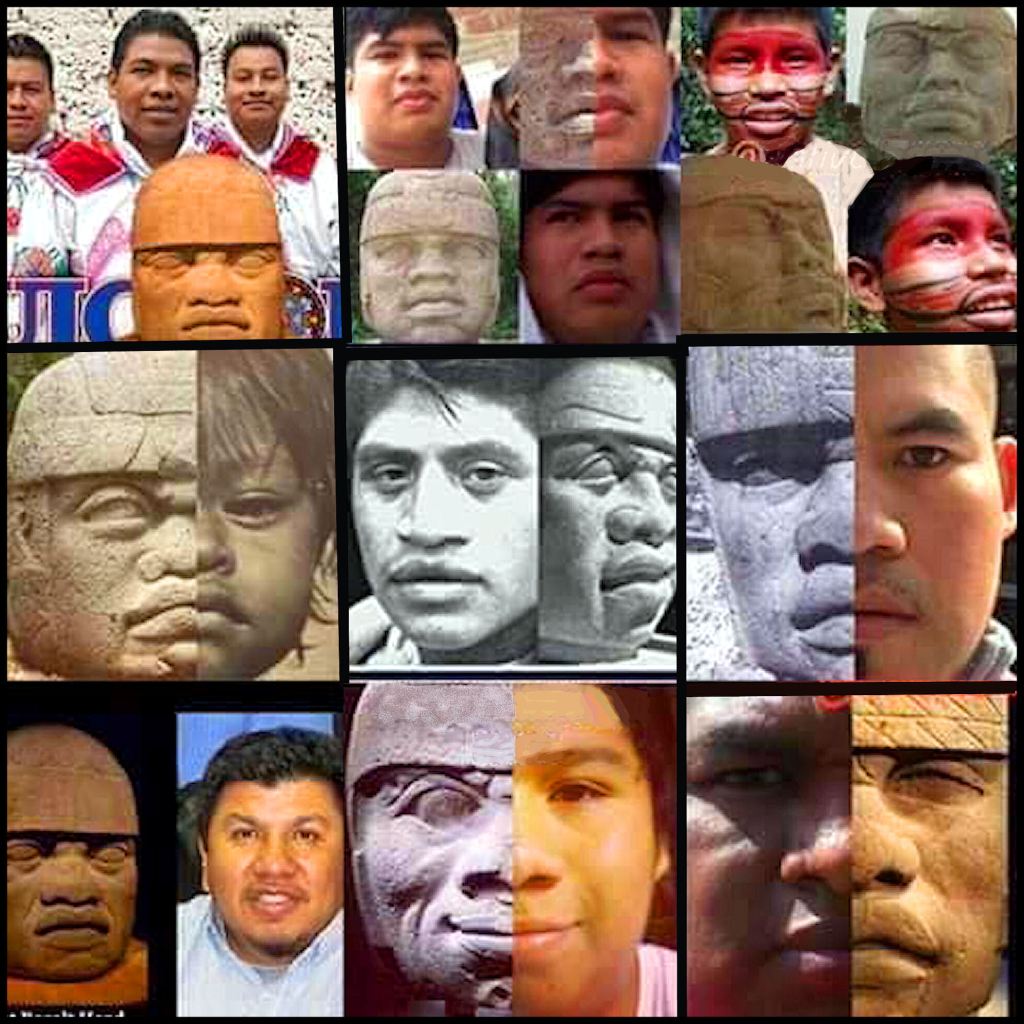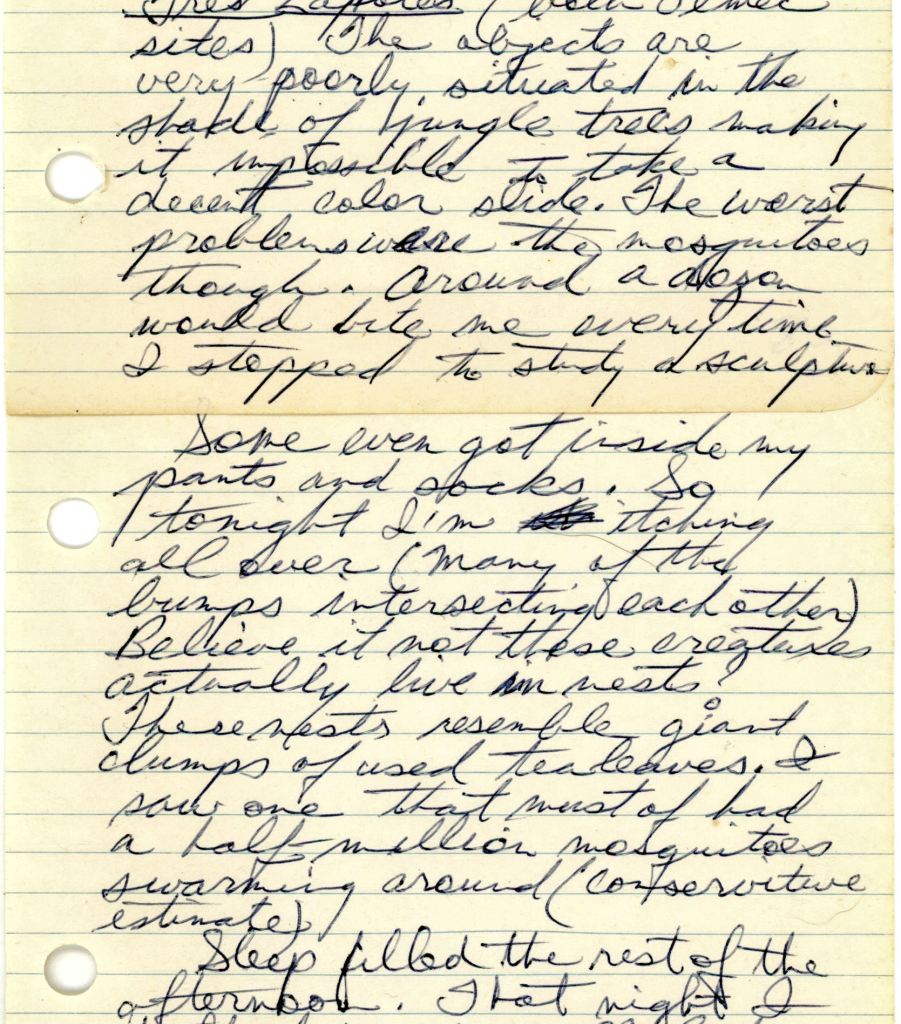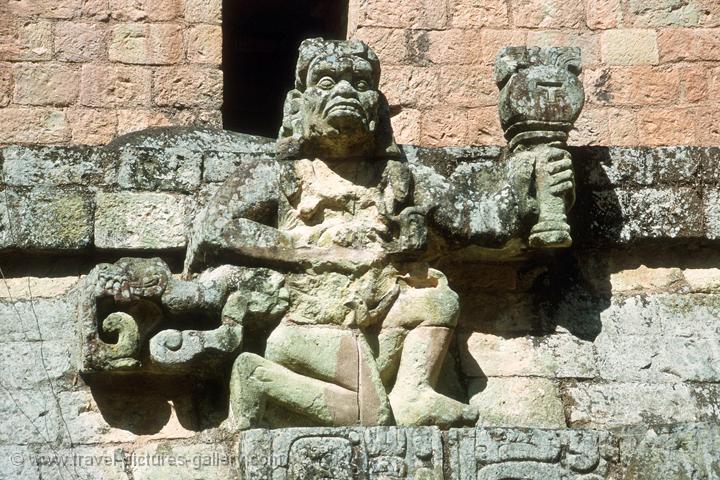by Richard L. Thornton, Architect and City Planner
One Summer In Mexico – Part 49
Probably, more misinformation is put on the web about the Olmec heads and Olmec Civilization, in general, than any other aspect of Mesoamerican History. The most common Alternative History candidates are (1) Numidians or Libyans, who founded “the first civilization in the Americas.” (2) Ancient Extraterrestrial Astronauts, (3) Colonists from from West Africa, who founded “the first civilization in the Americas” and “Muslim Native Americans intermarried with Muslim Africans after an Arab expedition that discovered the Americas in 1178 AD. They claim that the real name of the Olmecas was Al Mecca, but this fact was covered up by the Spanish.


Cultural Fact Check: The Zoque of southern Mexico, the Soque (Sokee) of Georgia and the Miccosukee (Sokee descendants) of Florida have always claimed to be the founders and descendants of the first civilization in Mexico. There is nothing in their DNA or cultural traditions, which suggests an African or Middle Eastern origin. The Sokee-Miccosukee Migration Legend states that while they were fleeing their homeland in Mexico, bands from other tribes in southern Mexico joined them. Some of those tribes do have substantial Polynesian DNA. Remnants of the Polynesians still live in Tabasco, plus among the Creeks and Snowbird Cherokees today.
Chronological Fact Check: Around 1700-1800 BC newcomers arrived on the coasts of Louisiana and Tabasco. These newcomers had no knowledge of agriculture, pottery making or metallurgy. That eliminates all four popular “founders of the first civilization in the Americas.” It is not known who these newcomers were because the damp, warm acidic soils of both regions quickly dissolve skeletons and teeth.
- The settlement at Poverty Point blossomed quickly and soon built a sophisticated village and a large mounds. Their nutrition was obtained from fishing, trapping and hunting animals, plus the gathering of wild, edible plants. They did not make pottery until near the end of their occupation of the site. It was abandoned around 1100 BC.
- Indigenous peoples, living in Tabasco had already developed many indigenous plants into cultivated crops. They obviously taught their agricultural skills to the newcomers. There was little or no mound-building in Tabasco until after around 1000 BC. Pottery-making and mound building began around 900 BC. The site of the large city of La Venta was first settled around 1200 BC. A significant town began forming around 800 BC. The town was abandoned around 400 BC. However, several Zoque cities and towns continued to thrive to as late as 1000 AD. From 300 BC onward, the Zoque towns increasingly resembled Maya Culture towns.


Writing system fact check: The earliest writing system in Tabasco had also be found in caves within Tabasco, Chiapas and southern Veracruz, plus on the Judaculla Rock in North Carolina: several Georgia petroglyphs; Parawan Gap, Utah; in several Caribbean Island caves; the Petersborough Petroglyphs in Ontario, around the periphery of the Baltic Sea in Europe and in Russia. They have no similarity to Semetic letters, Egyptian hieroglyphics, Proto-Saharan, Proto-Hebraic or Arabic writing.
The second writing system utilized in Tabasco has been found in only one location in Mexico, but appears, synthesized with the aboriginal system that featured abstract sunflower symbols for elite families, who government town-states. Most of the symbols on the Cascajal tablet can be found in the art of Etowah Mounds. This suggest that the Epi-Olmec writing system became the basis of the Creek writing system, which was presented to Governor James Edward Oglethorpe on June 7, 1735 . . . aka the Creek Migration Legend.

We are still alive!
Below are photos of modern Native Americans in Tabasco, the Muskogee-Creek Nation in Oklahoma and the Seminole Tribe of Florida. It is clear that there are alive today, Indigenous Americans, who could have walked the plazas of ancient Zoque towns, without being noticed.

Why I wanted out of La Venta ASAP!
The great Zoque city of La Venta was sited in one of the most miserable locations on earth. The ruins have a tropical climate with 70+ inches of rain a year and flat, boggy soil. It was originally on an island within a swamp. However, since I visited the site, some of the swamplands have been drained and converted into a small town. In my journal, you will note that I thought my color slides would turn out terrible, but actually they were excellent and very easy to restore. I never will forget as long as I live, however, those massive clouds of black, hungry mosquitoes! Why in the world would anyone want to start a civilization there? It’s a good question.


The photo’s of the likeness of today to the tribes is incredible Richard. And I wish I could translate the Epi – Olmec writings. Thanks for sharing your knowledge.
LikeLike
You are quite welcome! On the other hand, I will not share those huge black mosquitoes at La Venta, which ate me alive.
LikeLike
Howdy, A fellow I knew in San Antonio had a perfect Olmec face…including the lips.
On Tue, Oct 27, 2020 at 12:24 PM The Americas Revealed wrote:
> alekmountain posted: ” by Richard L. Thornton, Architect and City Planner > One Summer In Mexico – Part 49 Probably, more misinformation is put on the > web about the Olmec heads and Olmec Civilization, in general, than any > other aspect of Mesoamerican History. The most com” >
LikeLiked by 1 person
Richard, I concur with the appearance of the Zokee/Sokee being some of the Groups which made up the Civilization of 3100- till their migration event to the South East. It is believed that their leadership arrived by boats from the East (around 1100-1200 BC)…the Poverty Point trading people could be a connection to the leadership. The artwork of the Maya indicates a larger people (for the Kings) for some of the Mega cities. The mega stone heads building seems to have started on the Western side of Mesoamerica which indicates a connection to a Easter Island people (which used a Indus valley script) and built large stone face monuments. Perhaps those symbols could help unlock your Creek writing system.
LikeLike
Richard, Some people were still using the “the ancient Circle within circles” for Poverty Point, as it looks like part was washed away. This symbol was used in cave art by the Cro-Magnon people of Europe perhaps a connection to the Lore of Giants in the Europa, America’s / Amorica (ancient name of Celtic Europa). One stone head in Guatemala seems to be a connection with the Hindu people that lived around the Caribbean Sea area. Their main city might have been the lost “Giant monkey city”… a connection to the Indus valley Hindu religion. The Copan city people seem to have a connection in their artwork. The Great city in North Georgia

LikeLike